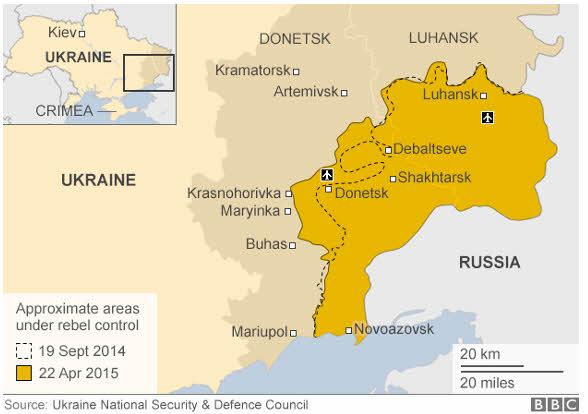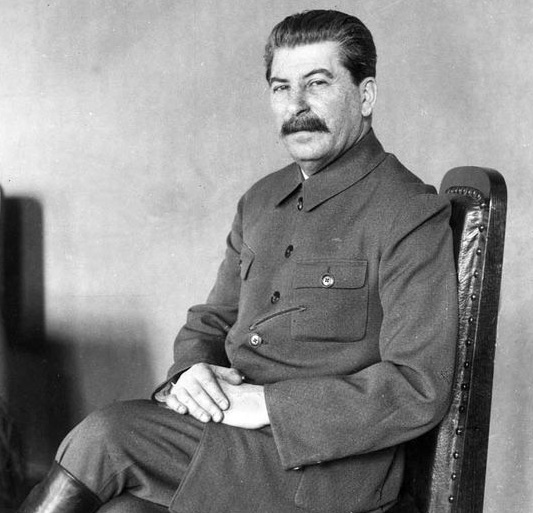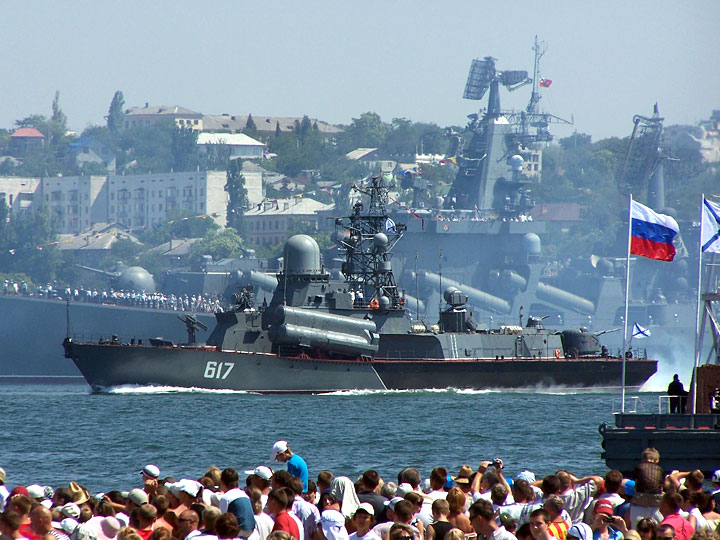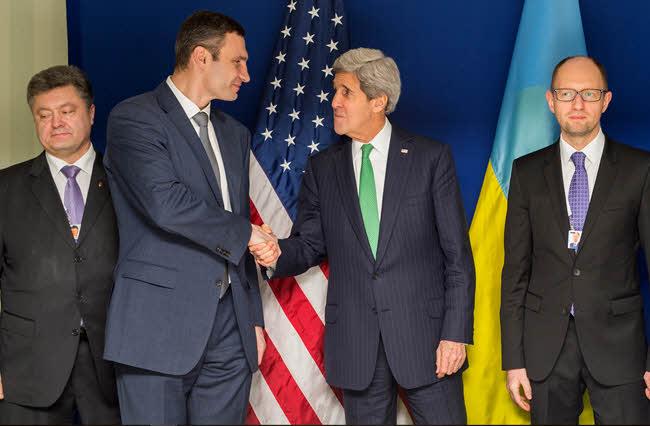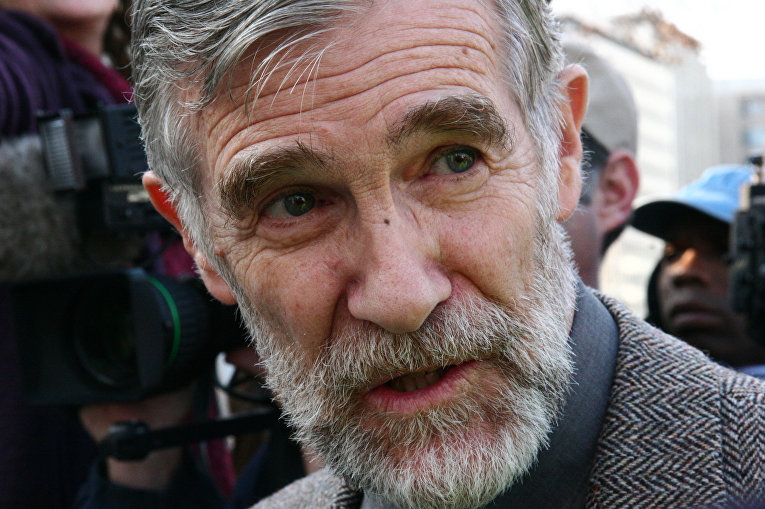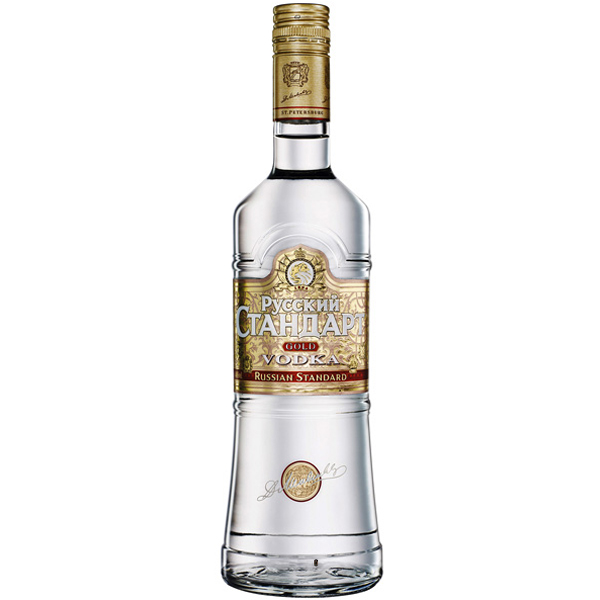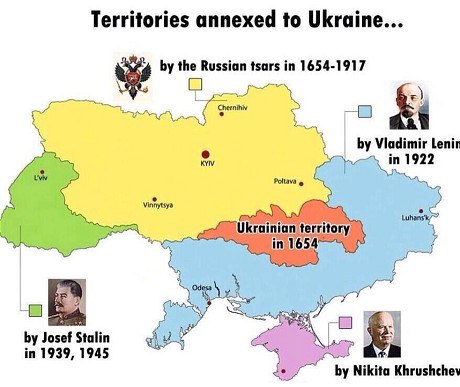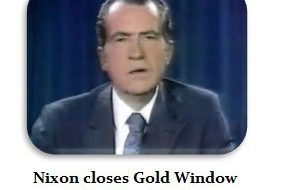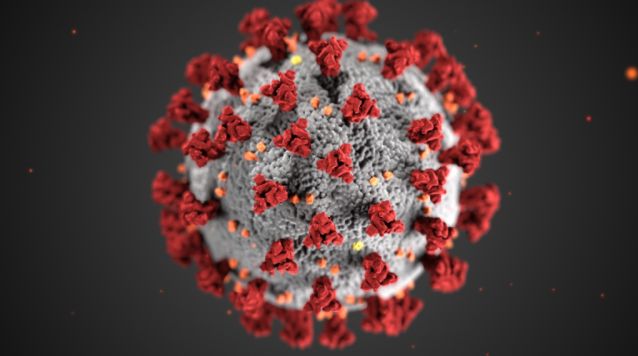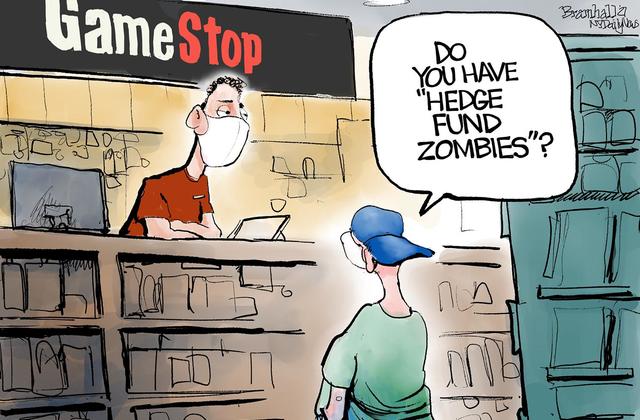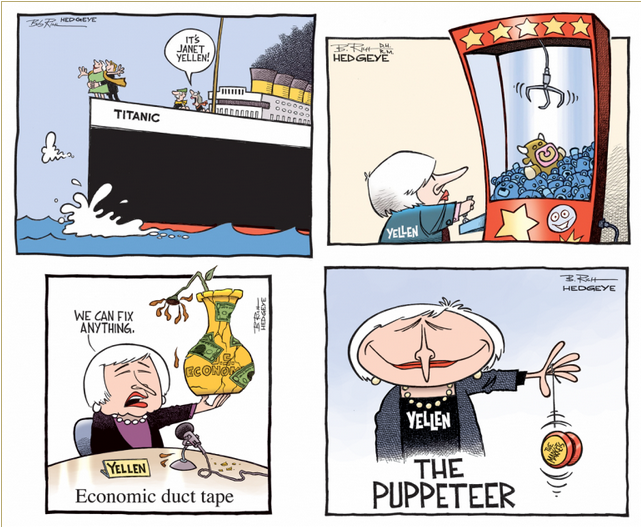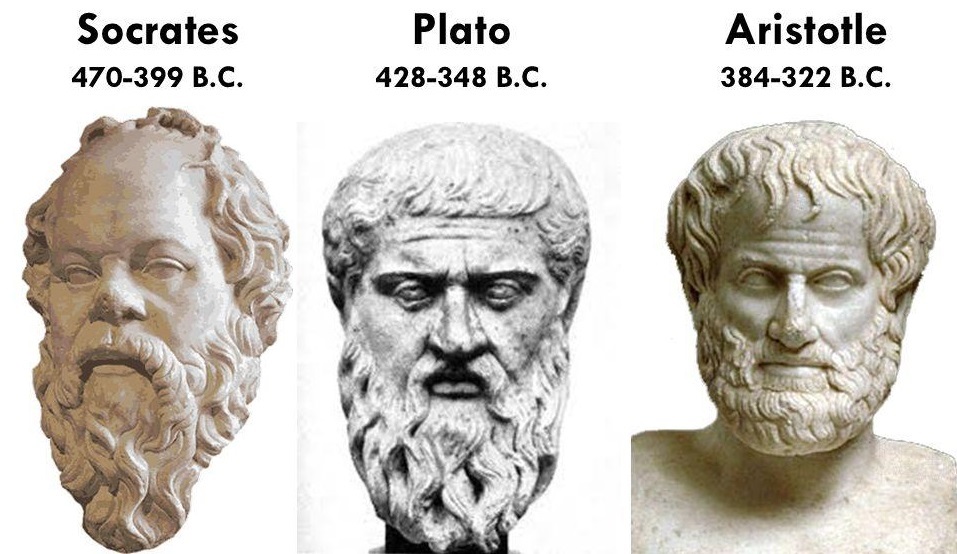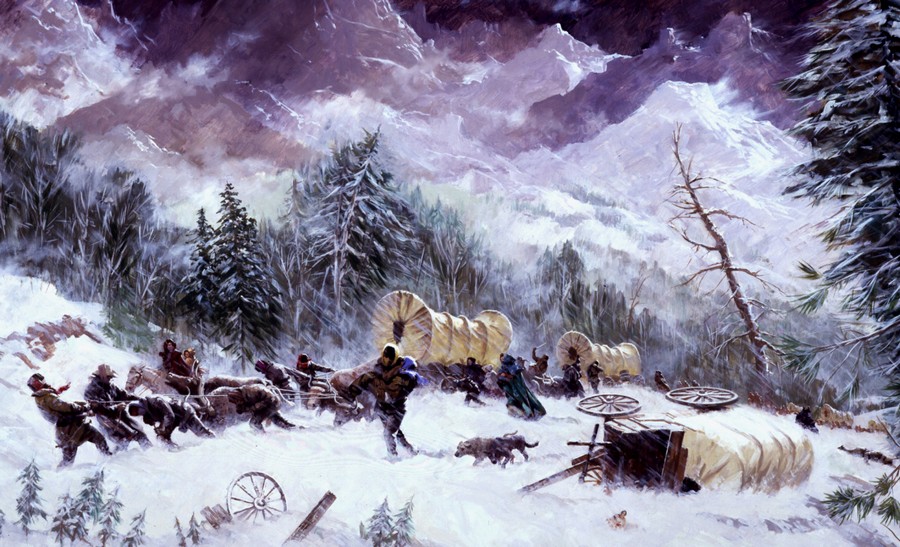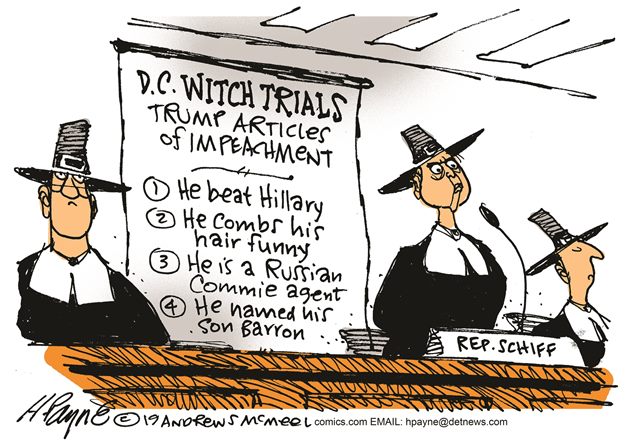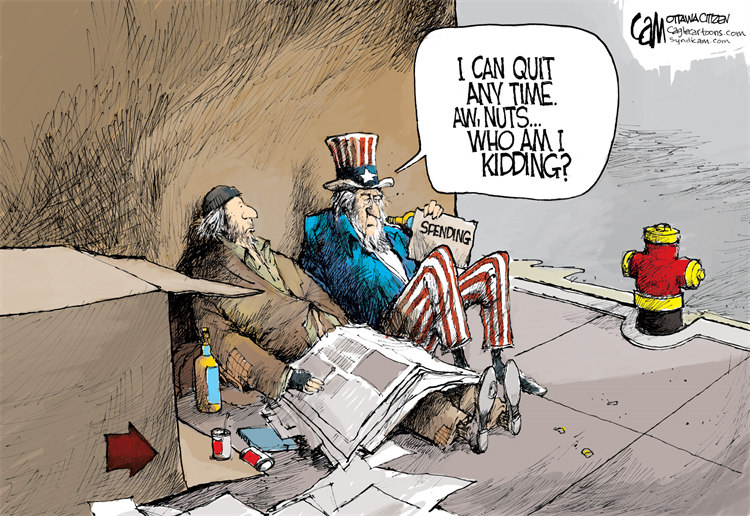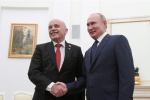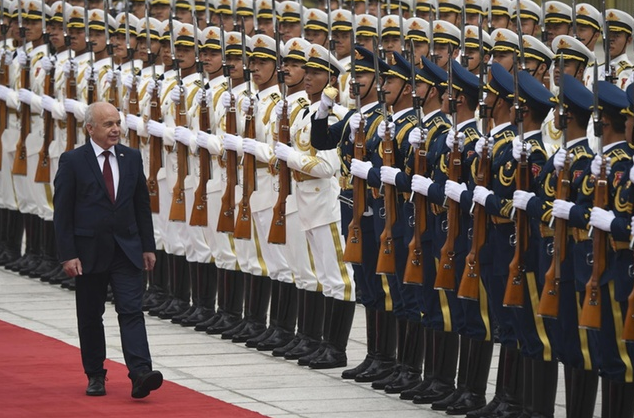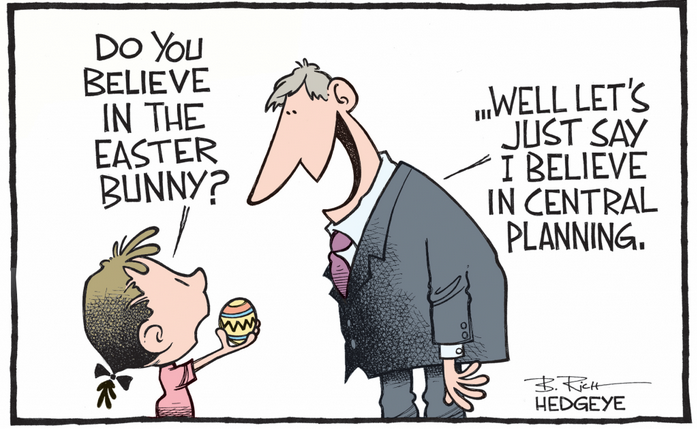Renewed EscalationThis summer witnessed a renewed escalation between Russia and Ukraine after Russian President Vladimir Putin accused Ukraine of sending saboteurs to attack Russian troops, targeting “critical infrastructure”. Kiev denied the allegations and claimed Russia’s “fantasy” was nothing but a false pretense to launch a “new invasion”. But what does the media tell us about what has been happening in Ukraine? I’m sure that if we base our opinion solely on mainstream information, the picture of this conflict will be completely different than if we followed independent sources. I am a big fan of Dr. Daniele Ganser, the founder of the Swiss Institute for Peace and Energy Research, Dr. Ron Paul, the Mises Institute and people linked to them – all these I consider valuable sources, particularly due to the investigative approach they took in their analyses on Ukraine. I therefore decided to write a short article about my personal impressions, which also takes a study by the University of Ottawa into consideration. The situation in Crimea is extremely delicate: it is already described as a ‘new cold war’, which can easily turn into armed conflict. For that reason, we should all question today’s media competence in relation to what happened in Ukraine and the story that is being told, and ultimately ask who benefits from this political instability? |
|
What the Media Told Us: Questionable FactsIn order to understand the full depth of the Crimean crisis, we must first lay out some of the basic known facts about it: On November 21st 2013, Ukraine’s President Viktor Yanukovych suspended talks on the EU association agreement, a treaty which would have promoted political and economic cooperation and possibly paved the way for integration to the bloc. It is worth noting that the deal offered by the EU also contained a military component. The suspension of the talks signified a break with the West, and the EU specifically, in favor of maintaining close Russian ties. Soon thereafter, Ukrainian protestors took to the streets and occupied the Independence Square or “Maidan”. What was envisioned as a peaceful revolution against a President accused of serving Russian and not national interests soon turned violent. The media reported that state security and snipers attacked protesters. But who can explain why members of the police were targets as well? Ray McGovern, a retired CIA officer, was the first defining the Maidan shooting as a regime change initiated by the West. Despite not having solid evidence, the media dismissed any alternative scenarios and instead promoted a single narrative: that Yanukovych’s state security (supported by Russia) massacred its citizens. |
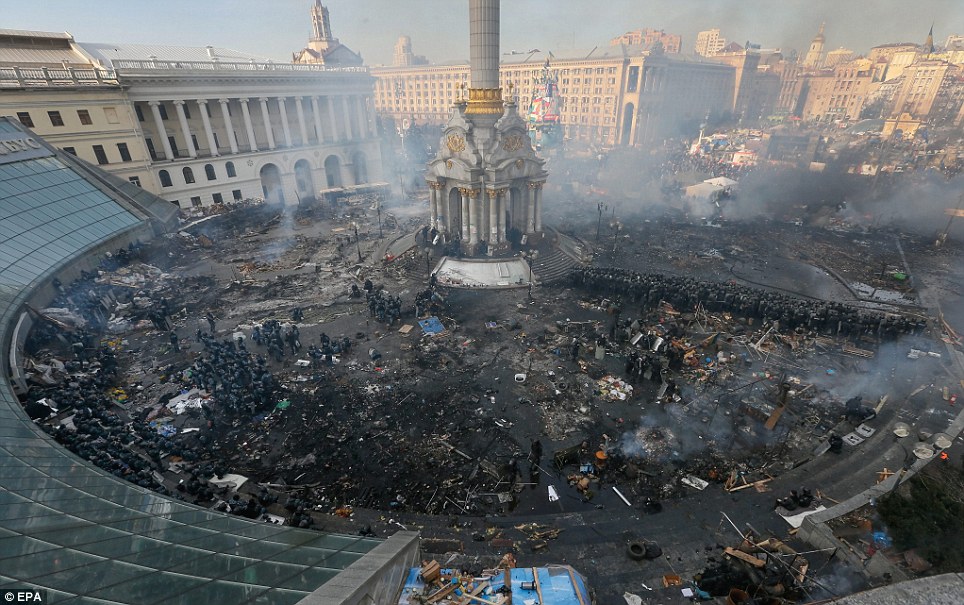
The Maidan in Kiev, after the protests had turned violent. 11 months later, the BBC finally deigned to report that “unknown snipers” had actually fired at both the protesters and the Ukrainian police, in an effort to escalate the confrontation. In short, the official story turned out to be complete hokum – the “conspiracy theory” was true. Someone had an interest in fomenting violence, and for all his faults, it wasn’t Yanukovich. The new government promised to investigate, but in spite of all the evidence and witnesses, nothing has ever come of this (big surprise!). Photo credit: EPA
|
| Meanwhile, pro-Russian separatists began demonstrations in the Eastern region and self-declared their independence. This soon escalated into an armed conflict with the Ukrainian government. Reportedly, Russian paramilitaries fought alongside the separatists. Naturally, the media portrayed this as an invasion by Russian forces.
In parallel, Crimea became part of Russia – the media said it was “annexed” to protect ethnic Russians. The word “annexation” was not randomly chosen; it implies that it was forcefully imposed– but this is not exactly accurate. A referendum was held in Crimea, whereby 95% were in favor of joining Russia. Meanwhile, Russia’s military involvement instigated economic sanctions by the EU and the United States. But even though Russia withdrew a majority of its troops, the sanctions are still in place and the region is still witnessing clashes in violation of the truce. Nevertheless, according to the mainstream narrative, Russia was the “villain” that disrupted the peace to maintain its foothold in Ukraine. |
|
Back to the Basics!To understand what is going on today, we need to consider the context, which also requires us to revisit the history that will explain the division within Ukraine itself. It goes back to the 16th and 17th century: Ukraine’s natural resources made it an attractive site for contending powers at the time, which led to its division along the Dnieper river, i.e. traditional divide and conquer strategies were implemented. Control over western Ukraine alternated between Poland and Austro-Hungary, which exposed the people of the region to European culture and values, while the East became part of the Russian empire. Under the Soviet Union, Stalin took a drastic approach to instill the Russian/Soviet mindset in Eastern Ukraine, by orchestrating a famine that starved and wiped out millions of Ukrainians. |
|
| Stalin then relocated Russian nationals to repopulate the region – in essence, the East became Russian and therefore we can understand why former U.S. ambassador to Ukraine, Steven Pifer, noted that “the sense of Ukrainian nationalism is not as deep in the east as it is in west.” |
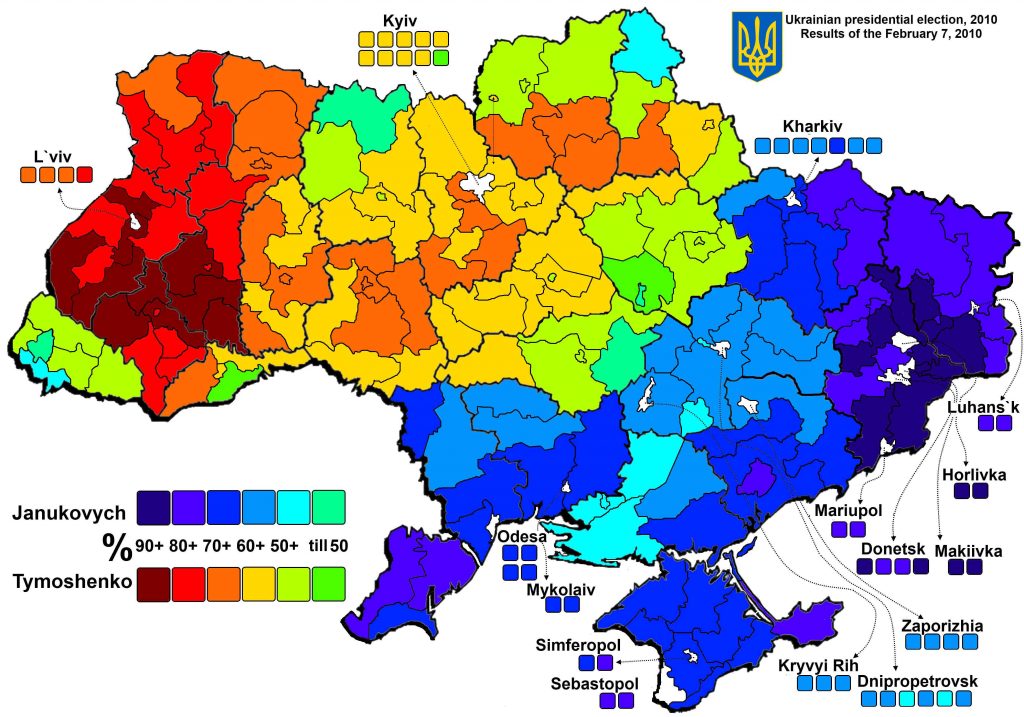 Ukrainian presidential election 2010, Janukovych, Tymoshenko - Click to enlarge Ukraine’s East-West divide: in the 2010 run-off election, the Eastern part of the country almost unanimously supported Viktor Yanukovich, while the Western part voted for Julia Tymoshenko. Kiev, the center of the protests, is located in Western Ukraine. For more maps illustrating the situation see “Mapping the Conflict in Ukraine”.
|
True Intentions – Is the Cold War Really Over?These tight historical ties between Russia and Ukraine still matter today and have an influence on domestic politics (as seen in the image above), in addition to the relations between the triangle of Russia, Europe and the United States. We also need to bear in mind the modern history of the Cold War and the original objective behind NATO. With the Cold War over, what are the objectives of its enlargement to include Eastern European states, particularly when recalling the unwritten (but often academically cited) agreement between the U.S. and Gorbachev, that NATO will not expand eastward? It is no wonder that Russia retained its only ice-free naval base, Sevastopol in Crimea. It is the home of the Black Sea Fleet and of extreme strategic importance. Russia would rather have Ukraine fall into chaos than let it fall to NATO! NATO’s enlargement strategy is of paramount importance to the West and as it appears, particularly to the United States. To secure this strategy, the U.S. took matters into its own hands. Back in 2003, the U.S. government indirectly supported the Orange Revolution by funding NGOs. In December 2013 (the advent of the Ukraine crisis), Assistant Secretary of State for European and Eurasian Affairs at the United States Department of State, Victoria Nuland, stated that the U.S. had invested more than USD 5 billion to support the development of democratic institutions, promoting civil society and good governance since Ukraine’s independence in 1991. But there is more. |
The Russian navy has been stationed in Sevastopol since the late 18th century. Yanukovich was overthrown shortly after extending Russia’s lease of the port until 2042 – fears that the new government might disregard the agreement very likely played a role in the Russian government’s decision to support the Crimean effort to secede from Ukraine to join Russia, and to accept the legitimacy of the referendum. It is worth noting that similar efforts in other Eastern Ukrainian regions were handled differently. Photo via sevnews.info |
| After President Yanukovych suspended talks with the EU, Ukrainian parliamentarian, Oleg Tsarov, warned that the U.S. Embassy was preparing for a civil war in the country through project “TechCamp”, which was under the supervision of American Ambassador Geoffrey Pyatt.
Pyatt was also involved in a political scandal after a phone conversation between him and Nuland was leaked early February, where they were debating who should take over the Ukrainian government. In this call, Nuland clearly stated:
|
The infamous leaked phone call between Vicoria Nuland and US ambassador Geoffrey Pyatt, in which they were plotting/ deciding who was going to rule Ukraine henceforth. Includes some less than salubrious language in reference to the EU. |
| This call sent shock waves through international politics – officials plotting a scenario to groom their favorites in the Ukrainian opposition for government, dragging in the UN’s Ban Ki Moon to seal the deal and the infamous remark by Nuland, saying “F*** the EU.” My apologies for swearing, but this is what she actually said.
I find the image (below) taken at the Munich Security Conference held on February 2nd 2014 interesting. It shows the former American Secretary of State, John Kerry, shaking hands with Vitaly Klitschko. However it was Poroshenko (far left) who became elected President that May, while Yatsenyuk (far right) – Nuland’s favorite – became Prime Minister. Please note, all this happened before the time period from 21st to 23rd of February, when Yanukovich was removed. |
|
What is the Crisis About?I believe in big power strategies and national interests influencing geopolitical developments, and geopolitics has everything to do with Ukraine, as Ray McGovern, argues:
This is what it boils down to: Regional instability means that Ukraine will remain confused about its alliance with the EU/NATO and that the EU and NATO will be worried about being drawn into a conflict zone. That is one way of seeing it, and one that seemingly benefits Russia. But there is an alternative scenario – one that questions that the regime change process in Ukraine serves Russia’s military and strategic interests – because quite simply, Ukraine brings NATO another step closer to Russia. |
|
The Power of Public OpinionIt is the first time in two years that we fear political tensions could escalate and possibly lead to a military altercation. This is the story being sold by the media – it plays on our fears of geopolitical instability and it is based on biased and inaccurate reporting of the facts. Throughout this article, there was no intention to take sides, but on the matter of Crimea, I wanted to highlight the selectivity and bias of the mainstream media, which aims to direct public opinion in a certain direction based on incomplete and misleading information. The oldest strategy has been “divide and conquer” and we should bear that mind, raise questions and take the extra step to search for answers and form our own opinions. We don’t know the truth – but what I ask you, especially in these crucial and uncertain times, is not to take any single narrative or one-sided reports for granted.
Addendum by PT: The Day After Nuland-PyattA little extra: the rather embarrassing attempt by the US government to explain the Nuland/ Pyatt conversation away – which essentially boils down to: “It was Putin’s fault”. 🙂 Oh, and it wasn’t really the “day after” – the spokeswoman of the State Department keeps stressing that the conversation took place “days and days ago”, i.e., “why are you even asking us about this ancient history?” 🙂 |
State Department Press Briefing with Jen Psaki on Assistant Secretary Nuland’s & Ambassador to Ukraine Pyatt’s Call from the Daily Press Briefing – February 6, 2014 |
Image captions by PT
Full story here Are you the author? Previous post See more for Next post
Tags: newslettersent,On Politics,Vladimir Putin









